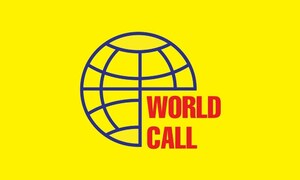EDITORIAL: In recent years, going digital has become increasingly rewarding, and in fact, essential for Pakistani small and medium-sized enterprises (SME) looking to thrive in a highly competitive market landscape.
With a digitally inclined youth demographic and the proliferation of numerous online business platforms, e-commerce has swiftly emerged as a key driver of growth, efficiency and market expansion for small businesses, which previously lacked access to wider markets, cost-effective digital tools and scalable business models.
However, as detailed in a recent report in a local daily, like the SME sector in general, e-commerce-based SMEs in Pakistan also face significant bottlenecks and structural disadvantages, preventing them from realising their potential, unlike in other regional economies where the sector is truly thriving.
According to the Payment and Commerce Market Intelligence, a global payments market research organisation, Pakistan’s e-commerce volume totaled $7.7 billion last year with retail e-commerce accounting for $5.4 billion of this amount.
It also forecast the projected value of transactions to reach $12 billion by 2027. Despite these apparently impressive figures, they dwarf in comparison to India’s where the e-commerce market is already worth a massive $123 billion.
The sector’s potential for growth, then, is clearly being hindered by substantial barriers, ranging from unreliable internet services and challenges in online payment systems to a general lack of trust in online shopping among customers.
The lack of an effective, efficient and secure online payment ecosystem, especially, has long been a major obstacle, particularly for businesses seeking to engage with international markets.
This stems from a combination of factors, including the absence of global payment platforms like PayPal – largely due to the failure of successive governments to establish a robust legal framework that would attract such players – the high transaction fees associated with existing online payment systems, persistent cybersecurity concerns related to online fraud and inadequate data protection measures, and a deeply ingrained cultural preference for cash transactions.
This preference for cash is further fuelled by distrust in digital payments, driven by concerns over fraud, transaction failures and the limited recourse available to consumers in case of disputes. As a result, 75 percent of Pakistani online shoppers prefer cash-on-delivery, just as they did a decade ago.
Contrast this with India, where a secure, user-friendly online payment system like the Unified Payments Interface has completely revolutionised digital transactions, fostering widespread adoption, enhancing financial inclusion and significantly boosting consumer confidence in cashless payments.
However, far from taking inspiration from India’s success in expanding digital payments, the authorities here routinely resort to measures that compromise the foundational infrastructure essential for a thriving e-commerce sector – reliable, secure and high-speed internet connectivity.
Not only did Pakistan rank 97th in the world in mobile internet speeds in February, as has been previously highlighted in this space, it also led the world last year in financial losses caused by internet outages and bans on social media apps, with a total estimated impact worth $1.62 billion. It is clear, then, that these disruptions have created a highly unpredictable environment for businesses to operate in.
It is also hard to ignore logistical and shipping bottlenecks, along with the broader economic climate – marked by inflation and diminished purchasing power – that has constrained e-commerce growth, and pushed businesses to constantly seek out new markets to maintain profitability and stay afloat.
Pakistan’s e-commerce sector, then, stands at a crossroads – where despite immense growth potential, it remains hindered by the inadequate digital payment infrastructure, unreliable internet connectivity and wider economic pressures. Addressing these remains crucial for the sector to thrive and compete globally.
Copyright Business Recorder, 2025























Comments